Excerpts from Jim Conrad's
Naturalist Newsletter
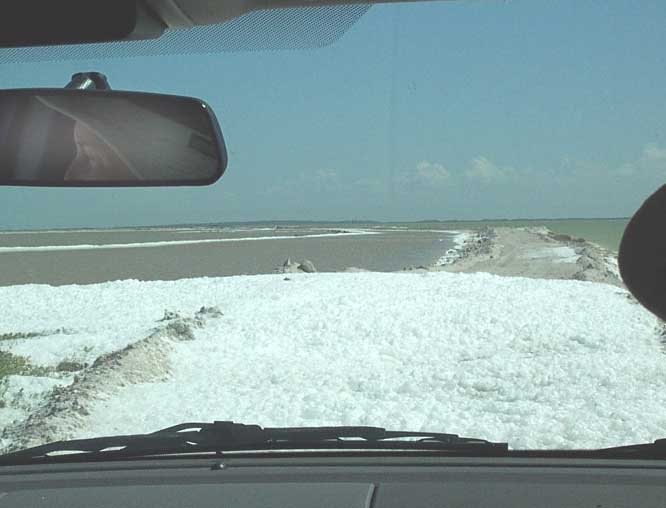
from the December 21, 2014 Newsletter issued from Río Lagartos, on the Yucatan Peninsula's northern coast (~N21.60°, ~W88.16°), Yucatán state, MÉXICO
BEACH FOAM/ BIOFOAM
On flamingo-viewing tours, especially after the wind has blown a few days, some visitors seem as impressed with the spume, or foam, that builds up wherever the wind blows it, as with the flamingos. During my first visit here in 2006, one day I was with a tourist among the salt pans of Las Coloradas when we came upon spume blown in such quantity across the road that it came up to the car door's window as we passed through it. You can see the foam above.
A moody picture taken this week of a more typical accumulation at the water's edge is shown below:

A handful of foam showing its soapsuds-like quality is shown below:
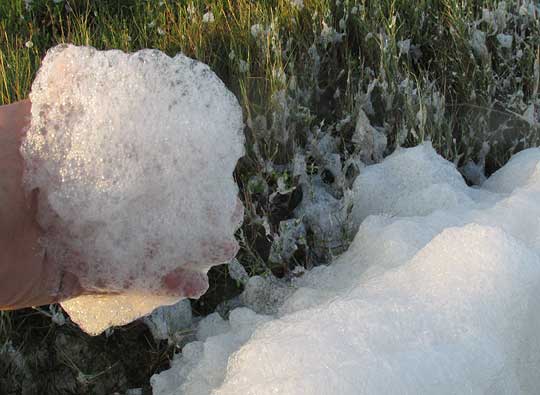
A shot showing how it blows inland littering the beach is shown below:
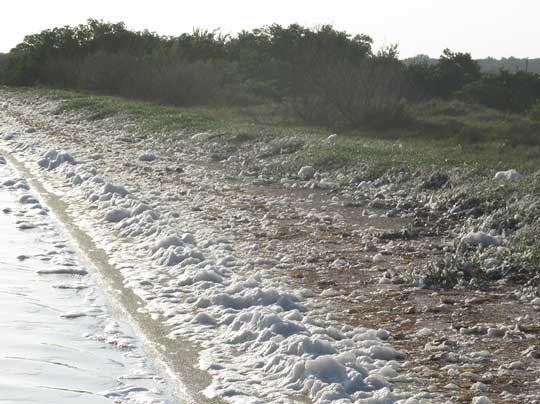
It even gathers up against Río Lagartos's storm wall and docking area, blowing over the wall with shreds of it, sometimes the size of basketballs or larger, rolling across the street like tumbleweed. Below, it's shown around the boats:
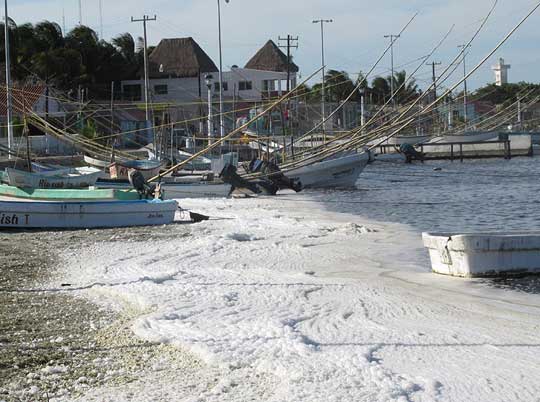
Where the foam forms a thick layer, often it composes itself into interesting designs, as shown below:
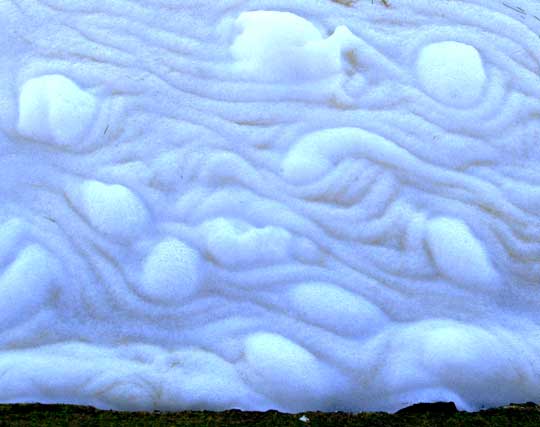
Besides its abundance, the most fascinating feature of this foam is its resiliency. You'd think that when its bubbles touch the dry pavement as shreds of it roll across a street, they'd burst, but the shreds stay intact until they blow up against a wall. Deposits linger a day or more. What makes the bubbles so tough?
There's a whole branch of science that looks into that question. The foam is known by such names as sea foam, ocean foam, beach foam, biofoam, and spume. You can download for free a 2010 paper reviewing the topic called "Biofoams and natural surfactants," and explaining things at the molecular and energetic levels, at http://www.ncbi.nlm.nih.gov/pmc/articles/PMC2954283/.
The short answer to what makes our beach foam so unusual is that it's caused by dissolved organic matter in water issuing from the mangroves, and also in open water resulting from decaying algae. The dissolved organic matter acts as a "surfactant," or foaming agent, that makes bubbles tough.
This science of foam doesn't restrict itself to beach foam. Particularly interesting foams includes that of which nests of various species of tropical and sub-tropical frogs are fashioned, and the hardening foams into which locusts and praying mantises lay their eggs. Some insect larvae, such as those of leafhoppers, froghoppers and spittle bugs, surround themselves with long-lasting foam as protection against predators. Horse lather is pretty interesting, too, made possible by a protein called latherin.
When you're out in the estuary on a windy day and a big shred of foam blows off the water's surface and sloshes into your face, and you wonder about it, your mind can just drift in all kinds of directions.